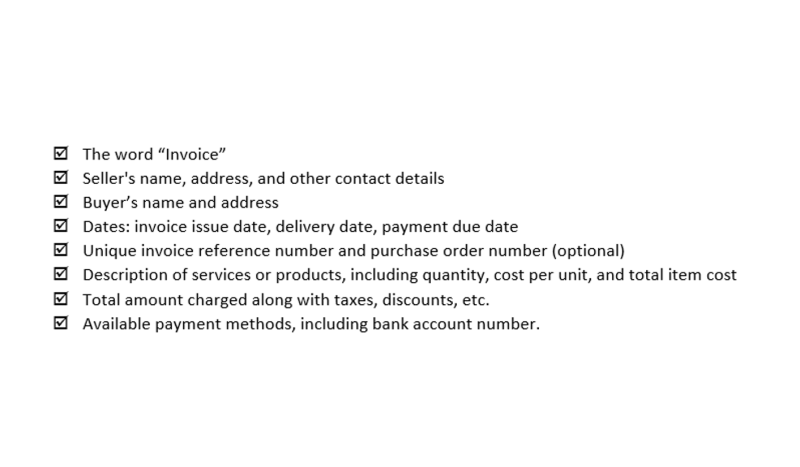Content

To calculate this, management may consider the difference in the NPV, IRR, or payback periods of two projects. Doing so provides a valuable https://www.bookstime.com/ perspective in evaluating projects that provide strategic value that is more difficult to quantify. Capital budgeting is very obviously a vital activity in business.
The Net Present Value is the amount by which the present value of the cash inflows exceeds the present value of the cash outflows. Conversely, if the present value of the cash outflows exceeds the present value of the cash inflows, the Net Present Value is negative. From a different perspective, a positive Net Present Value means that the rate of return on the capital investment is greater than the discount rate used in the analysis. Capital budgeting investments and projects must be funded through excess cash provided through the raising of debt capital, equity capital, or the use of retained earnings. Debt capital is borrowed cash, usually in the form of bank loans, or bonds issued to creditors. Equity capital are investments made by shareholders, who purchase shares in the company’s stock. Retained earnings are excess cash surplus from the company’s present and past earnings.
Leasing documentation is usually simpler than debt issues, and lease transactions can generally be completed more quickly. Debt issues require public disclosure of institutional financial information that is not required in lease transactions.
If the annual rate of return is greater than the required rate of return, the project may be accepted. The higher the rate of return, the higher the project would be ranked. Refers to the evaluation of prospective investment alternatives and the commitment of funds to preferred projects. Long-term commitments of funds expected to provide cash flows extending beyond 1 year are called capital expenditures.

Furthermore, if a business has no way of measuring the effectiveness of its investment decisions, chances are the business would have little chance of surviving in the competitive marketplace. Corporations are typically required, or at least recommended, to undertake those projects that will increase profitability and thus enhance shareholders’ wealth. David Kindness is a Certified Public Accountant and an expert in the fields of financial accounting, corporate and individual tax planning and preparation, and investing and retirement planning.
In that situation, it is best to use the NPV or PI valuation methods. C) Since fixed assets and stocks will increase in money value, the same quantities of assets must be financed by increasing amounts of capital. In Keymer Farm’s case, the cash flows are expressed in terms of the actual dollars that will be received or paid at the relevant dates. Therefore, we should discount them using the money rate of return. Divide the total amount of an investment by the average resulting cash flow.
Finally, if at the end of the lease period, the asset is sold, a cash inflow equal to the resale value less any tax would accrue to the lessor. CFt is not known with certainty and could fluctuate over the life of the project.
Again, having part ownership in a company provides an incentive for managers to reject proposals that will not increase the value of the company. Because the NPV is less than 0, the return generated by this investment is less than the company’s required rate of return of 15 percent. Thus Chip Manufacturing, Inc., should not purchase the specialized production machine. The annual maintenance costs and annual labor savings rows represent cash flows that occur each year for seven years .

New York University’s Stern School of Business maintains cost of capital figures by industry. Almost 7,000 firms were included in accumulating this information. The following sampling of industries compares the cost of capital across industries.
If the NPV is zero, the rate of return from the investment equals the required rate of return. If the NPV is less than zero, the rate of return from the investment is less than the required rate of return. Since the NPV is greater than zero for Jackson’s Quality Copies, the investment is generating a return greater than the company’s required rate of return of 10 percent. The term used to describe future cash flows in today’s dollars. When net cash flows are not all the same, a separate present value calculation must be made for each period’s cash flow. A financial calculator or a spreadsheet can be used to calculate the present value. Assume the same project information for the Cottage Gang’s investment except for net cash flows, which are summarized with their present value calculations below.
Capital budgeting follows a set series of steps that help businesses effectively evaluate investments. Within businesses of many sizes and dynamics, multiple factors are considered to evaluate whether or not a new project is a sound investment to activate or bring into a company’s portfolio. The return on investment is the largest factor to sway affirmation or denial, but peripheral factors including philanthropic efforts can lead a decision in a different direction. Leaders must be proficient in capital budgeting to ensure that capital resources are strategically implemented to generate maximum return. Finally, since the process can have a high risk of error if not done properly, it is critical to have someone with the proper expertise to calculate and process acapital expenditure request.
Although the net present value and internal rate of return methods are the most commonly used approaches to evaluating investments, some managers also use the payback method. For the company, the IRR of approximately 11 percent is greater than the company’s required rate of return of 10 percent. The process of analyzing and deciding which long-term investments to make is called acapital budgeting decision, also known as a capital expenditure decision. Under current practices, acquisition costs are often not attributed to individual programs, and the holding costs of capital are almost never recognized.
One of the most common forms of acquiring land and buildings is through the use of conventional mortgage financing. Repurchase agreementsinvolve the sale of securities with a simultaneous commitment to repurchase those securities. The terms of the agreement require the repurchase of securities on a specific date and at a fixed price. In a typical transaction, a financial institution would sell securities to an investor and agree to buy back those same securities from the investor at a fixed price the next day. Because there is a commitment to repurchase the securities, the transaction is classified as a collateralized loan by the seller of the securities. The difference between the selling price and the repurchase price is the interest paid by the seller. However, it is more common for the trading partners to negotiate a separate interest rate for the transaction and set the repurchase price of the securities equal to the sale price.
This means that it provides a rough measure of how long a business will have its investment at risk, before earning back the original amount expended. There are two ways to calculate the payback period, which are noted below.

Each of these rating agencies has developed ratings for both short-term and long-term debt. Moody’s rates long-term debt issues on a scale of AAA for the highest quality to C for the lowest quality. Standard & Poor’s rates these debt issues on a scale of AAA for the highest quality to D for bonds in default. The two basic classifications of leases are operating and financial leases.Operating leasesare typically set up for rentals of automobiles, trucks, computer equipment, and office space and equipment. These leases often are for terms of less than 5 years and represent a fraction of the useful life of the asset.
Thus, the payback period is not a good technique for capital budgeting decisions because it does not use the time value of money and future cash flow performance. Still, it may be considered the best one if the company has liquidity problems and needs to recoup investment money soon.
Bond insurance lowers the interest rate on a debt issue by providing additional security for the investor. Under certain circumstances, some institutions may choose not to Capital Budgeting use more traditional project financing vehicles to upgrade facilities. This may occur when the list of projects is insufficient to warrant the expense of a bond issue.
Managers may also require a payback period equal to or less than some specified time period. For example, Julie Jackson, the owner of Jackson’s Quality Copies, may require a payback period of no more than five years, regardless of the NPV or IRR. When a company invests in a long-term asset, such as a production building, the cash outflow for the asset is included in the NPV and IRR analyses. The depreciation taken on the asset in future periods is not a cash flow and is not included in the NPV and IRR calculations. However, there is a cash benefit related to depreciation since income taxes paid are reduced as a result of recording depreciation expense.
Over the long run, capital budgeting and conventional profit-and-loss analysis will lend to similar net values. However, capital budgeting methods include adjustments for the time value of money (discussed in AgDM File C5-96, Understanding the Time Value of Money). Capital investments create cash flows that are often spread over several years into the future. To accurately assess the value of a capital investment, the timing of the future cash flows are taken into account and converted to the current time period . The net present value approach is the most intuitive and accurate valuation approach to capital budgeting problems. Discounting the after-tax cash flows by the weighted average cost of capital allows managers to determine whether a project will be profitable or not.